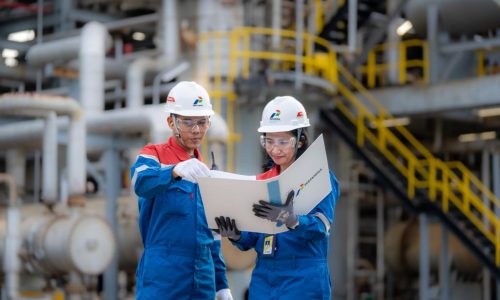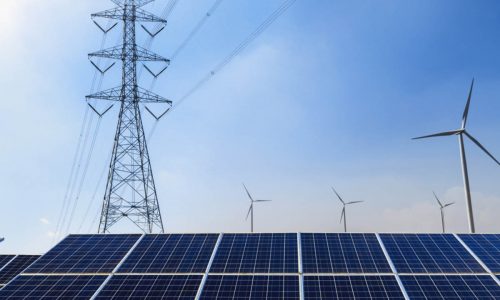South Korea expressed its interest in supporting Indonesia’s plan to build its first commercial 77 MegaWatt Small Modular Reactor (SMR) nuclear power plant in West Kalimantan, Indonesia.
This commitment was demonstrated by the delegation of South Korea’s Vice Minister of Trade, Industry, and Energy Jang Young Jin, who met with Indonesia’s Minister of Energy and Mineral Resources Arifin Tasrif on Monday (15/5).
“Indonesia has established this cooperation with Japan and the US, and South Korea has also joined through partnership with Japan for the development of SMR technology. So, Indonesia is open to collaboration with multiple parties,” said the Director of New, Renewable, and Energy Conservation (EBTKE) at the Ministry of Energy and Mineral Resources Dadan Kusdiana, on Tuesday (16/5).
Nuclear plants, the installed capacity of which will gradually reach 1 to 2 GW, are expected to be part of Indonesia’s electricity network by 2039.
Key players and partnership in nuclear power plant project
The plan for the partnership in the nuclear power plant project was previously marked by the signing of a Memorandum of Agreement (MoA) by Indonesia’s Coordinating Minister for Economic Affairs Airlangga Hartarto and the US Ambassador to Indonesia Sung Y. Kim.
The ceremony, held on March 18, also involved Deputy Assistant Secretary of State for Energy Resources Ann Ganzer and the US Trade and Development Agency (USTDA).
As part of the agreement, the USTDA has provided a grant of US$1 million to PLN Indonesia Power to fund the technical feasibility assessment.
PLN Indonesia Power has further partnered with NuScale Power, a US-based mini modular nuclear reactor designer, for assistance in the collaboration, as well as with JDC Corporation Japan.
To speed up the commercial operation of the nuclear reactors, the Nuclear Energy Supervisory Agency (Bapeten) on March 28, also launched a pre-licensing consulting service for the plant’s construction.
It provides an opportunity for relevant business players to carry out consultations related to safety, security, and safeguards (3S) aspects before later submitting a licence application to Bapeten.
Assessing nuclear resources in Indonesia
Indonesia is recognized as a country abundant in nuclear resources. According to data from National Nuclear Energy Agency (Batan) in 2019, Indonesia possesses a total of 81,090 tons of uranium resources and 140,411 tons of thorium resources.
These valuable nuclear materials are distributed across three regions, namely Sumatra, Kalimantan, and Sulawesi. Sumatra holds 31,567 tons of uranium and 126,821 tons of thorium, Kalimantan has 45,731 tons of uranium and 7,028 tons of thorium, while Sulawesi has 3,793 tons of uranium and 6,562 tons of thorium.
According to the International Atomic Energy Agency, nuclear power plants have the capacity to generate a significant amount of electricity and are considered a low-carbon energy source. Furthermore, nuclear power plants are expected to support the growing energy demands of Indonesia’s population and economy.
It is worth noting that a single nuclear power plant unit with a capacity of 1,000 MW requires 21 tons of uranium, enabling electricity generation for approximately 1.5 years. Remarkably, only one-third of the 21 tons of uranium is emitted as waste or byproducts.
Meanwhile, member of the National Energy Council (DEN) Herman Darnel Ibrahim noted that Indonesia will rely heavily on other countries for various aspects of nuclear power plant development, including technology, construction, and operation.
The generation of 1 KW of electricity from a nuclear power plant requires an investment ranging from US$6,000 to US$10,000. The investment needed to construct a 3,000 MW nuclear power plant is equivalent to the investment required for a 10,000 MW coal-fired power plant (PLTU), a 24,000 MW gas-fired power plant (PLTG), or a 40,000 MW rooftop solar power plant (PLTS atap).
“There are several equipment that Indonesia needs to import, and maintenance will also involve other countries,” Herman said.
Furthermore, nuclear power plants also require stringent safety measures to prevent accidents and protect against radiation leaks. This is in line with its development that often faces public resistance due to concerns over safety, environmental impacts, and the potential for nuclear weapons proliferation.









